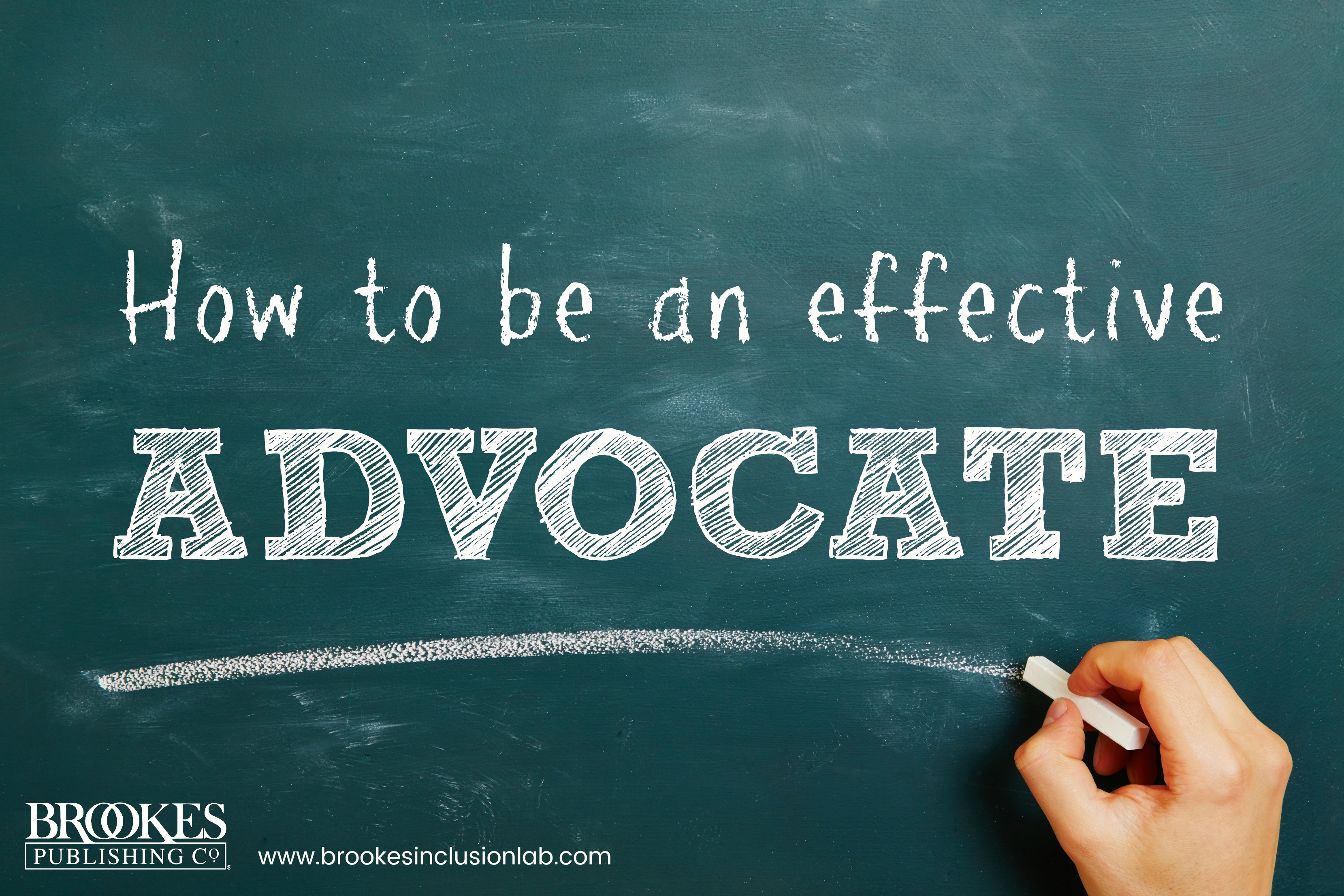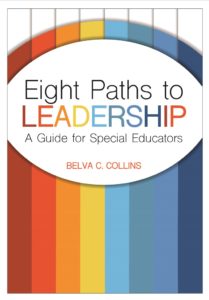12 Tips on Becoming an Effective Advocate for Students with Disabilities
July 17, 2018
The Brookes Inclusion Lab is back from our brief hiatus, and we’ve got some new posts all queued up to help you prep for the upcoming school year. (Stay tuned for posts on improving executive function skills, preparing a physical classroom environment to welcome all learners, helping students who experience loss and trauma, and more.)
 Today’s post is on a topic that’s critical for every inclusive teacher: learning how to sharpen your advocacy skills so you can speak out effectively on behalf of your students and their rights. Excerpted and adapted from the new guidebook Eight Paths to Leadership by Belva C. Collins, these 12 tips are a great starting point for expanding your leadership skills in the important area of advocacy. See which ones might work for you—and if you have another idea you’ve found helpful, please write in and share it with us!
Today’s post is on a topic that’s critical for every inclusive teacher: learning how to sharpen your advocacy skills so you can speak out effectively on behalf of your students and their rights. Excerpted and adapted from the new guidebook Eight Paths to Leadership by Belva C. Collins, these 12 tips are a great starting point for expanding your leadership skills in the important area of advocacy. See which ones might work for you—and if you have another idea you’ve found helpful, please write in and share it with us!
- Get fully prepared. Effective advocacy requires prep work before you dive in. Before engaging in advocacy activities, get yourself ready by thoroughly reviewing the issues and making an informed decision about how you’ll distribute information to others.
- Reflect on your current advocacy practices. Start by thinking about the ways you currently advocate for your students with disabilities in different environments, such as the faculty lounge, IEP or transition meetings, and school PTA meetings. What are you doing right now to be an advocate and a leader in these environments? What else could you do, and in which environments could you step up your efforts?
- Talk with a person with a disability and their family members to identify the most pressing issues. To identify the issues that most require advocacy, talk to the people whose lives are directly affected by them. Ask what issues are of special concern for this person and their family, learn about their self-advocacy methods, and pinpoint concerns that could be presented to community officials or state or national legislators.
- Choose a timely issue and write about it. Select an issue or issues on which to take a strong and informed stance. (Inclusion? Behavioral intervention and support? Transition to adulthood?) Locate at least five sources that support your position on this issue, plus a personal experience. Then write a piece about your stance on the issue—it could be a letter to the editor of your local newspaper, an opinion piece for a news outlet, or a letter to your legislator. (Make sure you avoid jargon that might be unfamiliar to the average reader.) Before you submit the piece, share it with a friend or colleague for feedback on the presentation of your argument.
- Learn from and get involved with organizations that advocate for people with disabilities. Look up organizations such as ACRES, CEC, the National Down Syndrome Society, and TASH, and see if they offer helpful descriptions of past advocacy efforts—these can be a good source of ideas. Some organizations offer discussion groups you can join to share ideas on advocacy. You might see if there’s a local chapter of the organization in your community, and attend a meeting or hold a chat with a member about advocacy efforts. Some of these groups also organize group trips to state capitols or Washington, D.C., to discuss issues with legislators or their staff members.
- Compile a list of legislators to contact. Look up the legislators who represent your community and state, and see if you can determine their stance on issues relevant to the lives of people with disabilities. Find their contact information and make a list of representatives to communicate with.
- Communicate efficiently and effectively with legislators. Email, phone calls, and visits are all viable options. Whichever communication method you choose, be brief and clear when you present your position, and be prepared to share data, anecdotes, and other materials that support your stance.
- Make use of your daily experiences. Often, compelling grassroots stories can draw greater attention to an issue than voicing an opinion does. Supplement facts and data with stories from your own personal experiences to lend more authenticity and authority to your positions.
- Find local partners for advocacy. Universities can be a great resource for local partnerships. Try contacting the head of a local university’s special education department, set up a meeting to discuss issues of concern, and discuss how you might work with faculty members and students on advocacy activities and events. For example, you might partner with faculty to recruit students for a local Buddy Walk sponsored by the National Down Syndrome Society as a way to raise funds for advocacy activities.
- Support the advocacy skills of others. How can you support students, families, and new teachers to become more skillful advocates? Consider direct instruction for students using a specific self-advocacy curriculum, and involve parents and teachers in advocacy projects (school meetings, parent groups) to strengthen their skills.
- Review and follow your employer’s policies. It’s your right as a citizen to speak out on important issues. But be aware of your school district’s policies for voicing your opinions in a public arena. And when practicing advocacy, always remember that you’re serving as a role model for your students, families, and colleagues.
- Engage in small acts of advocacy, too. Effective acts of advocacy don’t always have to require speaking out in public forums or tackling issues on a statewide or national level. If you don’t feel comfortable in a public arena, subtle acts of advocacy in your classroom or school can have a big impact, too. Communicating frequently with students and parents, practicing active listening, modeling respectful language, and sharing evidence-based practices are all powerful ways to advocate on a smaller scale in your daily work.
What would you add to this list? What are some effective ways you’ve advocated for the rights of your students with disabilities and their families? Share your wisdom in the comments below!
LOOK INSIDE THE BOOK
 Eight Paths to Leadership by Belva C. Collins
Eight Paths to Leadership by Belva C. Collins
In this empowering professional development resource, Collins shows special educators how to pursue more intentional leadership roles so they can maximize their impact in preK-12 schools.




Write a Comment
Your email address will not be published. Required fields are marked *
Post a Comment